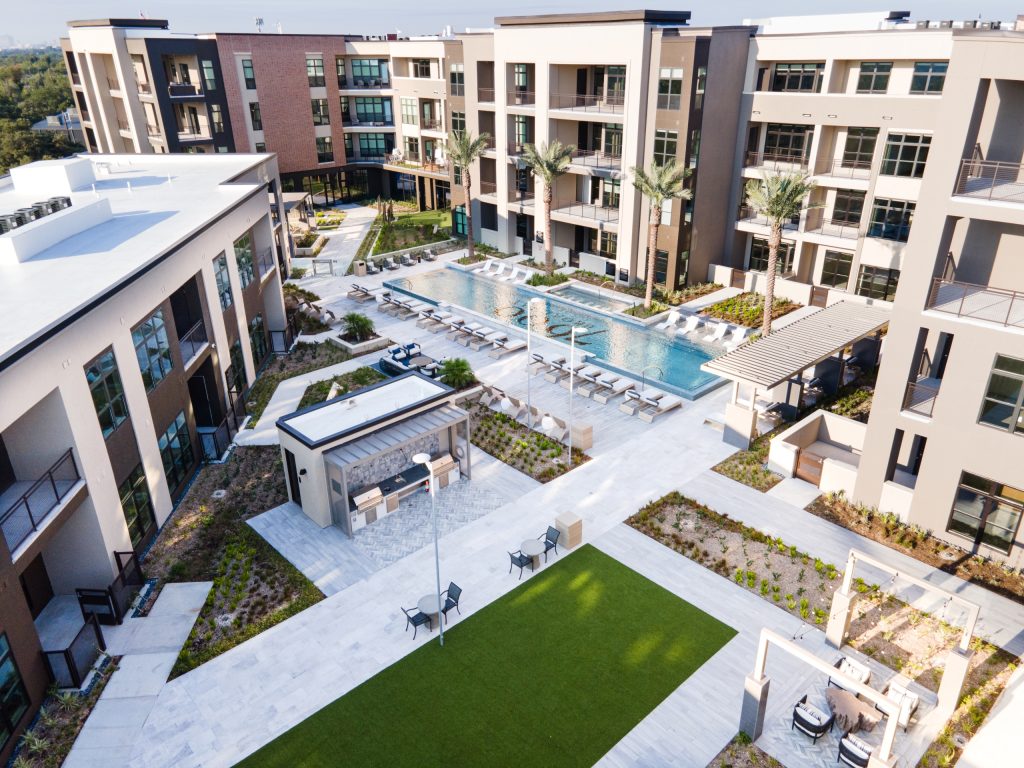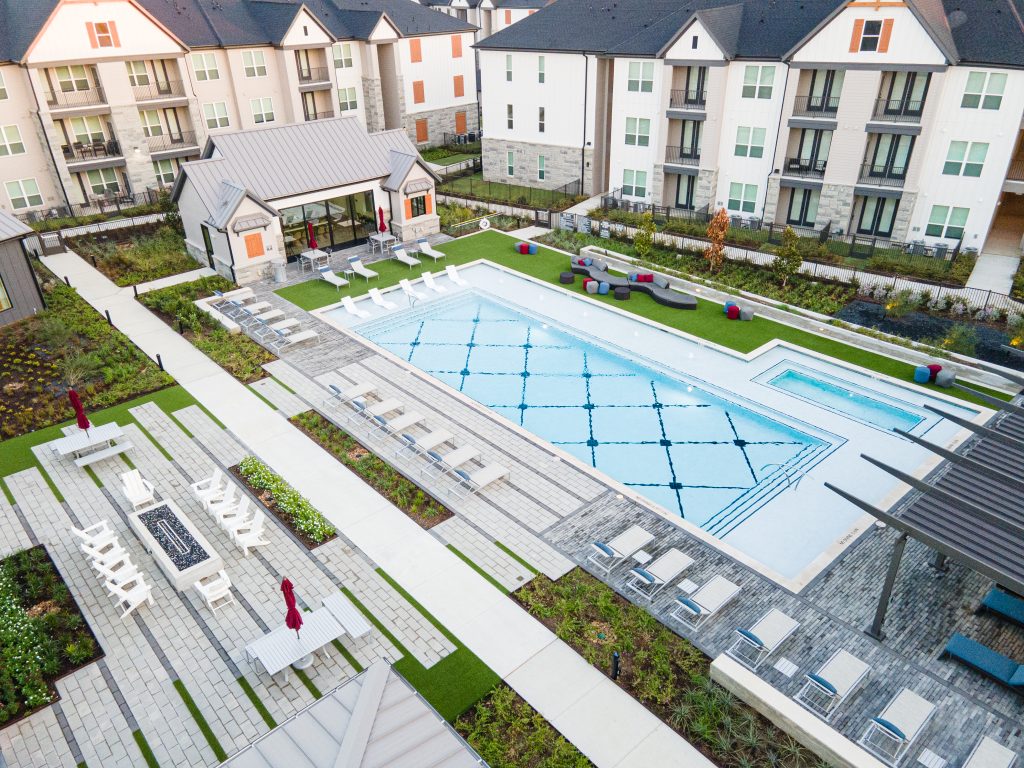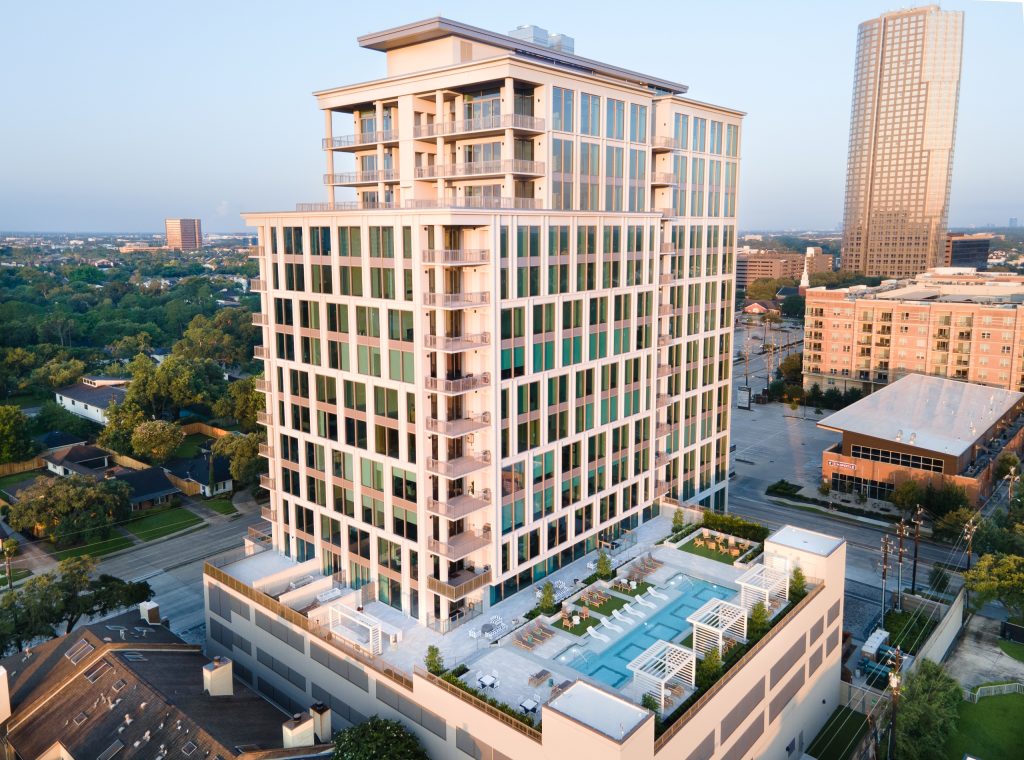Written by Wesley Salazar, PLA | Partner, KW Landscape Architects
Multi-family development has been one of KW’s leading sectors for the past 10 years. It has created opportunities for us to put our mark on a variety of cities across the nation, and in the case of Houston, contribute to the city’s downtown skyline.
In April of this year, I had the privilege of joining a multi-family panel with Interface in San Antonio alongside other architects and contractors where we spoke about the challenges, trends and opportunities we saw within this sector. I’d like to share some important details and projections that were discussed by my panel.
In 2024, the multi-family development sector in Texas has experienced a more measured pace compared to the rapid growth seen in previous years. Despite the slowdown, the outlook remains optimistic for a rebound in 2025, driven by improving economic conditions, innovative solutions, and ongoing demand for housing in major metropolitan areas like Austin, Dallas-Fort Worth, Houston, and San Antonio.
Current Dynamics of Multi-Family Development
 Economic Adjustments: While economic uncertainty has impacted investor confidence and financing for new developments, this period of adjustment is setting the stage for more stable growth. Developers are navigating these challenges, positioning themselves for a stronger rebound in 2025 to 2029.
Economic Adjustments: While economic uncertainty has impacted investor confidence and financing for new developments, this period of adjustment is setting the stage for more stable growth. Developers are navigating these challenges, positioning themselves for a stronger rebound in 2025 to 2029.
Construction Costs: Although rising construction costs have been a hurdle, advancements in technology and materials are providing new opportunities for efficiency and cost savings. Developers are exploring innovative construction methods that promise to streamline processes and reduce expenses such as 3D printed building and units.
Regulatory Environment: Regulatory requirements and zoning laws have posed challenges, but ongoing dialogue between developers and policymakers is fostering a more collaborative environment. Efforts to streamline approvals and reduce bureaucratic delays are gaining momentum, creating a more favorable landscape for future projects.
Affordability Focus: Addressing housing affordability is a priority. While it has been a constraint, it also presents an opportunity for developers to innovate and create affordable housing solutions that meet the needs of a broader population.
Positive Trends in Major Cities
 Austin: Known for its vibrant tech industry and desirable outdoor amenities/experiences, Austin is poised for a resurgence in multi-family developments. Collaborative efforts between the city and developers are addressing regulatory and cost challenges, paving the way for new projects.
Austin: Known for its vibrant tech industry and desirable outdoor amenities/experiences, Austin is poised for a resurgence in multi-family developments. Collaborative efforts between the city and developers are addressing regulatory and cost challenges, paving the way for new projects.
Dallas-Fort Worth: The DFW metroplex continues to attract residents and businesses, maintaining strong demand for housing. Strategic initiatives to promote affordable housing and streamline development processes are setting the stage for renewed growth.
Houston: Despite economic fluctuations in the energy sector, Houston remains resilient. The city is focusing on diversifying its economy and fostering innovation in construction, which bodes well for future multi-family developments.
San Antonio: San Antonio is leveraging its strong community ties, “steady Eddie” attitude, and collaborative spirit to overcome challenges. Its affordability aspect and close proximity to its sister city, Austin, makes it a prime candidate for future development.
Projections for a Positive 2025
 Economic Stability: Post election, as economic conditions stabilize, with inflation under control and interest rates leveling off, investor confidence is likely to rebound. This will open up more opportunities for financing and new developments. Innovative financing mechanisms and public-private partnerships will be key to unlocking new development potential. Collaborative efforts will help secure the necessary funding for projects.
Economic Stability: Post election, as economic conditions stabilize, with inflation under control and interest rates leveling off, investor confidence is likely to rebound. This will open up more opportunities for financing and new developments. Innovative financing mechanisms and public-private partnerships will be key to unlocking new development potential. Collaborative efforts will help secure the necessary funding for projects.
Government Support: State and local governments are increasingly committed to addressing housing needs. Incentives, subsidies, and streamlined processes are expected to drive a new wave of multi-family housing projects. Developers focusing on affordable and workforce housing are likely to find significant opportunities, supported by government incentives and a growing market need.
Persistent Demand: The underlying demand for multi-family housing in Texas remains strong, fueled by population growth and urbanization. This provides a solid foundation for renewed development activity.
Innovative Solutions: Advances in construction technology, such as prefabricated and modular methods, are poised to reduce costs and enhance efficiency. These innovations will make new developments more feasible and attractive.
While 2024 has seen a more measured pace in the multi-family development sector in Texas, the outlook for 2025 is encouraging. Economic stabilization, government initiatives, strong demand, and innovative construction practices are expected to drive renewed growth. By addressing affordability and securing financing, developers are well-positioned to capitalize on the positive trends and opportunities in the Texas housing market.




